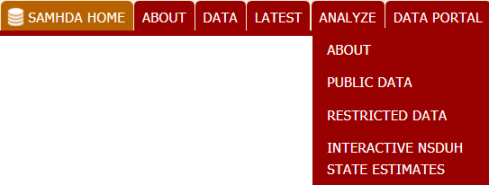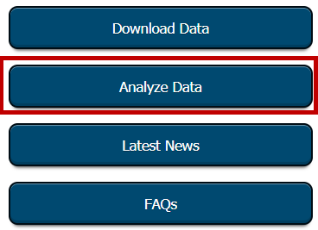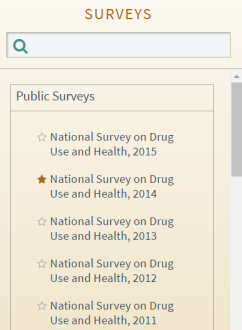- Hover over the Analyze tab on the toolbar and select Public Data.

- Click the Analyze Data button on the Home page to open the Analyze Data page. Click the PDAS link.

If necessary, click the star next to the survey name to Add to Favorites.
Public-use Data Analysis System (PDAS) is a user-friendly online analysis tool for users to analyze public-use data files (PUFs). This tool allows users to review study variables, run crosstab analyses, perform logistic regressions, and download the results of any analysis to CSV format. PDAS is populated with the PUFs and may not contain all variables of interest. No files need to be downloaded.
PDAS and the PUFs do not include any geographic identifiers; they include only collapsed age categories and do not include continuous age variables (including age at first use of substances). Several other variables, like income, are recoded to courser levels as well. Other demographic variables (i.e., immigrant status) have also been removed to protect the confidentiality of respondents.
To access PDAS, perform the following:


If necessary, click the star next to the survey name to Add to Favorites.
See Also:
Run a Crosstab
Run a Logistic Regression
Add to Favorites
Access Recent Analyses
Analysis Methodology
FAQs